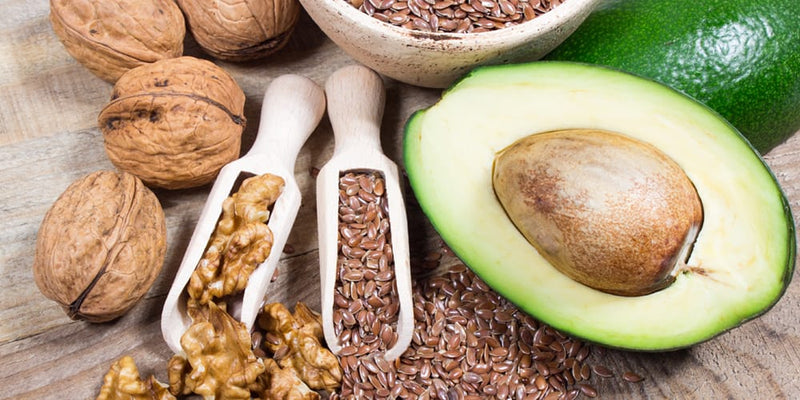Published on October 25, 2021
Help support your immune system this Fall
Cool, crisp mornings. Spectacular fall foliage offering up a symphony of vibrant reds and yellows. And local markets full to bursting with the bounty of nature –apples, pumpkins, and squash. Fall is one of our favourite seasons. But along with the beauty of fall comes a less welcome time – cold and flu season.
According to the WHO (World Health Organization), our flu season peaks between November and April but can start as early as October[1]. So as you soak up the joys of the season (jumping into leaf piles, anyone?) make some time to protect your immune system. Here are a few tips to get you started:
- Stay hydrated: feel a cold or flu coming on? Drink plenty of liquids to avoid dehydration[2]. Water, clear broth, tea and sports drinks with electrolytes are all good choices to avoid fluid loss.
- Drink herbal teas: speaking of fluids, hot tea not only helps you hydrate – it can also be soothing to your throat. Common teas consumed to soothe the throat include herbs and plants such as licorice root, green tea, slippery elm, and chamomile[3].
- Keep those hands clean: washing your hands regularly with soap and water is a key measure in preventing transmission of flu and cold[4]. Health Canada recommends scrubbing your hands with water and soap for a minimum of 20 seconds[5].
- Avoid dry air: we tend to stay indoors in winter, which correlates with peak Canadian cold and flu season – and where aerosolized pathogens may remain airborne for prolonged periods[6]. Research has shown that enhancing the relative humidity of your indoor environment can help reduce the infectivity of cold and flu bugs[7]. If you don’t have a humidifier, placing containers of water around the house can help increase moisture content of the air (just ensure they won’t be tipped over and out of the reach of pets and children) – or try simple hacks like turning off the exhaust fan and opening your bathroom door while showering.
- Support your immune system with a healthy diet rich in nutrients like zinc and vitamin D. Red meat, chicken, beans and milk all contain zinc – which studies show can inhibit the replication of a type of common cold virus, called rhinovirus, in the upper respiratory system[8]. Vitamin D can be found in fatty fish, egg yolks and of course in foods fortified with Vitamin D such as milk, orange juice and eggs. Considered an essential nutrient in the maintenance of bone and muscle health, Vitamin D also helps support immune function[9]. In summer, exposure to the sun lets out skin produce Vitamin D naturally, but many people get insufficient levels of sunlight during our long winter months. A Vitamin D supplement can help ensure you’re getting enough in your diet[10].
In addition to proactively taking care of yourself with tips listed above, taking natural health products containing Vitamin D and Zinc can help maintain immune function. Elderberry gummies with added Vitamin D and Zinc are an effective (and delicious) way to support your immune system, while Zinc lozenges with Echinacea & Vitamin D are a popular go-to natural health supplement during the winter months. Omega-3’s with added Vitamin D – in both delicious liquid and in soft gels – not only help with the maintenance of good health, but also help provide the immune support benefits of Vitamin D.
Hopefully these tips help you avoid the worst of cold and flu season, while enjoying all that fall has to offer! Consult a Health Care Practioner to see what product is right for your needs, and before making any changes to your diet or lifestyle.
[1] FluWatch annual report. Accessed August 6, 2021 from: https://www.canada.ca/en/public-health/services/publications/diseases-conditions/fluwatch/2018-2019/annual-report.html
[2] Health Canada . The Benefits of Hand Washing. Retrieved from: https://www.canada.ca/en/health-canada/services/healthy-living/your-health/diseases/benefits-hand-washing.html#how August 06, 2021.
[3] Healthline: What are the best teas for soothing a sore throat? Accessed Sept. 14, 2021 from: https://www.healthline.com/health/best-tea-for-sore-throat#types
[4] Cowling BJ, Chan KH, Fang VJ, et al. Facemasks and hand hygiene to prevent influenza transmission in households: a cluster randomized trial. Ann Intern Med. 2009;151(7):437-446. doi:10.7326/0003-4819-151-7-200910060-00142
[5] Cowling BJ, Chan KH, Fang VJ, et al. Facemasks and hand hygiene to prevent influenza transmission in households: a cluster randomized trial. Ann Intern Med. 2009;151(7):437-446. doi:10.7326/0003-4819-151-7-200910060-00142
[6] Noti JD, Blachere FM, McMillen CM, et al. High humidity leads to loss of infectious influenza virus from simulated coughs. PLoS One. 2013;8(2):e57485. doi:10.1371/journal.pone.0057485Reiman JM, Das B, Sindberg GM, et al.
[7] Humidity as a non-pharmaceutical intervention for influenza A. PLoS One. 2018;13(9):e0204337. Published 2018 Sep 25. doi:10.1371/journal.pone.0204337
[8] Suara RO, Crowe JE Jr. Effect of zinc salts on respiratory syncytial virus replication. Antimicrob Agents Chemother. 2004;48(3):783-790. doi:10.1128/AAC.48.3.783-790.2004
[9] Vitamin D. The Nutrition Source. https://www.hsph.harvard.edu/nutritionsource/vitamin-d/. Published 2020. Accessed August 11, 2021.
[10] Office of Dietary Supplements - Vitamin D. Ods.od.nih.gov. https://ods.od.nih.gov/factsheets/VitaminD-HealthProfessional/. Published 2021. Accessed August 11, 2021



